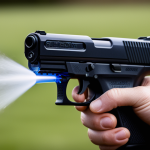Understanding GPS Lap Timers
In the thrilling world of sport bike racing, staying ahead of the competition requires precise performance tracking. GPS lap timers offer technology-rich solutions for racers to gain a competitive edge, providing a significant improvement over traditional timing methods like stopwatch-based systems. By utilizing GPS technology, these devices deliver real-time data with unparalleled accuracy.
GPS lap timers combine speed, precision, and detailed metrics, essential for any serious racer. Unlike conventional methods, they automatically track various performance parameters such as lap times, sector analysis, and speed variations. This allows riders in the UK and worldwide to analyze races with meticulous detail.
Also to read : Boost Your Sport Bike’s Fuel Efficiency: A Complete Power Commander Installation Guide for UK Riders
These timers are particularly beneficial in sport bike racing, as they facilitate in-depth performance analysis. Riders can review specific sections of a track where time can be gained or lost, making adjustments for subsequent laps based on comprehensive feedback. This capability enhances both training efficiency and racing strategy formulation.
By reliably tracking and storing performance data, GPS lap timers empower riders to set clear objectives, measure improvement over time, and ultimately ride smarter. Their advanced features and automated feedback loop render traditional methods increasingly outdated, offering a competitive edge vital to modern racing.
In parallel : Unleashing Performance: How Different Sport Bike Tires Handle UK’s Rainy Roads
Installation and Setup
Successfully installing a GPS lap timer on your sport bike is essential for optimising its capabilities in tracking performance. Here is a step-by-step installation guide:
-
Mounting the Device: Secure the GPS lap timer using the appropriate brackets. Ensure a clear view of the sky for optimal satellite signal reception.
-
Connecting Sensors: Attach necessary sensors to capture accurate speed and performance metrics. Follow the manufacturer’s wiring instructions meticulously.
-
Power Supply: Connect the device to the bike’s power source. Ensure connections are secure to prevent power loss during use.
To achieve the best results, customise the device settings for maximum performance. Adjust sensitivity levels to capture precise lap times and calibrate based on specific track conditions.
Common challenges during installation include signal interference and incorrect sensor placement. To troubleshoot, double-check connections and consult the user manual or online forums if necessary.
This setup ensures your GPS lap timer works optimally, providing reliable data crucial for refining your racing strategy. Tailoring these settings allows for precise performance evaluation, offering an edge over other riders who rely on less sophisticated tools.
Key Features to Consider
Choosing the right GPS lap timer involves understanding the variety of features that can substantially enhance your racing experience. One essential feature is real-time data feedback, which allows racers to receive immediate information on lap timing functions and adjust strategies on the fly. This real-time capability is crucial for refining performance metrics during practice sessions.
Another important aspect is the ability to conduct detailed sector analysis. This function breaks down tracks into segments, enabling riders to pinpoint exactly where they gain or lose time. It is an invaluable tool for enforcing a strategic approach to improving lap times.
User-friendly interfaces also play a vital role. A well-designed, intuitive interface ensures that riders can access and interpret their data without hassle, allowing them to focus on the race rather than navigating complex menus. A few top models also offer wireless connectivity, allowing seamless data transfer to companion apps or software, which is incredibly useful for post-race analysis.
When selecting a GPS lap timer, ensure it includes these key features to maximise the potential for meaningful performance improvements. A blend of sophisticated measurements and ease-of-use makes it an indispensable tech tool in modern sport bike racing.
Comparing Top GPS Lap Timers on the Market
Choosing the best GPS lap timer is crucial for enhancing performance in sport bike racing. Here, we compare the top models available, highlighting features to aid in making an informed decision.
Product Review: Racelogic VBOX Sport
The Racelogic VBOX Sport impresses with its 10Hz GPS engine, delivering high accuracy for performance tracking. It provides detailed lap timing functions and integrates seamlessly with companion software for data analysis.
- Pros: High precision, user connectivity.
- Cons: Premium pricing, requires third-party integration for extended features.
Product Review: AIM Solo 2
AIM Solo 2 is valued for its user-friendly interface and sector analysis capabilities. Sporting a dual-satellite system, it enhances timing accuracy significantly.
- Pros: Accurate real-time data, intuitive interface.
- Cons: Limited wireless capabilities, medium battery life.
Product Review: Garmin Catalyst
Garmin Catalyst offers unique coaching features and advanced metrics analysis. This model focuses on improving speed enhancement and strategic feedback.
- Pros: Comprehensive feedback system, sturdy build.
- Cons: Higher cost, complex setup for beginners.
Pricing analysis reveals that while Racelogic is premium, AIM Solo 2 provides a balance between cost and utility. Gamified feedback makes Garmin the choice for advanced users seeking in-depth analysis.
Performance Improvement Techniques
Integrating racing techniques with GPS lap timers significantly boosts performance. By assessing the detailed data these devices provide, riders can effectively refine their racing strategies. For instance, comparing sector analysis allows racers to identify areas where they can reduce lap times by adjusting their approach and improving speed enhancements.
These techniques are especially useful for breaking down overall lap time into manageable intervals. By focusing on specific track segments, racers can hone in on precise adjustments to their performance. For instance, a rider might notice they consistently lose time in certain corners and use this insight to tweak cornering techniques.
Case studies illustrate how racers have transformed their performance through these methods. For example, an amateur racer improved their lap times by 15% over a season by diligently analysing GPS data and experimenting with different racing lines.
By leveraging the lap time optimization capabilities of GPS lap timers, riders can continually perfect their form and strategy. This ongoing analysis and adjustment process offers a competitive edge, providing racers with real-time feedback to make informed, strategic decisions. Such advancements solidify GPS lap timers as indispensable tools in modern sport bike racing.
Testimonials and Case Studies
Sport bike racers in the UK have embraced GPS lap timers to supercharge their performance tracking. Numerous rider experiences highlight the transformative impact these devices have on racing strategies. For example, many racers have noted substantial improvements in lap times after integrating GPS data into their routines, thus validating the technology’s effectiveness.
One compelling case study involves a professional racer who cut lap times by 12% in a single season. By utilising sector analysis from the timer, they pinpointed inefficiencies in cornering techniques and adjusted their approach accordingly. This adaptation led to more consistent performance across various track conditions, showcasing how lap time optimization is achievable with solid data insights.
Performance testimonials also underscore the advantages for amateur riders. Many note the timers’ user-friendly interface as pivotal in understanding data without added complexity. These insights have driven improvements of up to 8% in personal bests, proving that accessible and precise information can enhance even an amateur’s racing experience.
Such real-world examples illustrate the profound benefits of GPS lap timers. By analysing this data, riders can unlock advanced racing techniques and achieve tangible results in their sport bike pursuits.


